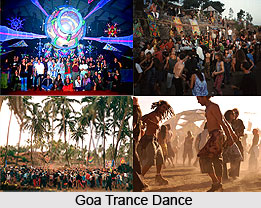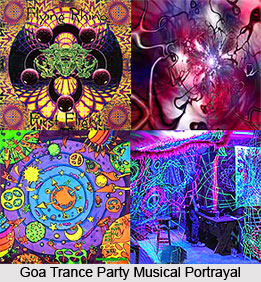 Trance began in early nineties (1990`s) in Europe, and is currently one of the most promising and influential music genres on the music scene. Trance is wide-scoped and it occupies a wide territory. Presently many popular groups, artists are inculcating trance music into mainstream music. Initially trance was mostly non-commercial, but now is getting more and more publicity through TV channels such as Viva and MTV, and in the press. Trance has become more popularized, by trance music DJ`s and producers, trance music labels, and even large recording companies.
Trance began in early nineties (1990`s) in Europe, and is currently one of the most promising and influential music genres on the music scene. Trance is wide-scoped and it occupies a wide territory. Presently many popular groups, artists are inculcating trance music into mainstream music. Initially trance was mostly non-commercial, but now is getting more and more publicity through TV channels such as Viva and MTV, and in the press. Trance has become more popularized, by trance music DJ`s and producers, trance music labels, and even large recording companies.
History of Goa Trance
Goa trance is form of electronic music which originated in the Indian region of Goa. The music has its roots in the popularity of the Goa region in the late 1960`s and early 1970`s. The Goa trance style however did not appear until much later. As the tourist influx tapered off in the 1970`s and 1980`s, a group stayed back in Goa. They were much keen towards the developments of music along with other activities such as yoga, recreational drug use. Goa Trance is a sub-genre of electronic dance music. It was mainly inspired by the EDM groups which had started to take its form back in 80`s. These groups comprised of Front Line Assembly, Meat Beat Manifesto, Front 242 and A Split-Second, Orbital, and psychedelic rocks like Ozric Tentacles, Steve Hillage and Ash Ra Tempel. However, the very first instigators, ideologists and style formers can be found even further in the past, more accurately - during the period of psychedelic rock in the 60`s and 70`s.
The Ray Castle was one of the first DJs in Goa. According to some the first Goa parties were organized in 1968. Techno was introduced in 1999 by a group of anonymous artists who performed exclusive Detroit Techno and Chicago House at a venue known as `Laughing Buddha` in Baga, Goa. They were the first to play the Techno style of music. The introduction of mixing on turntables using vinyl was a first for Goa at that time. Till then `DJs` usually used `Mini Discs`, `D.A.T` and CDs, without `beat matching` to mix.
 Change in Goa Trance
Change in Goa Trance
Goa trance was originally referred to as trance dance. The music in the period 1993-1999 was characterized as psychedelic trance-dance. With time the tracks became lengthier than earlier, so the average track was around 8.30 minutes, and the tempo was around 145 BPM (beats per minute). The structure of tracks mostly had the same pattern, so almost every track had an atmospheric intro, 4/4 rhythm which was followed by oriental and eastern melodies, acid sounds and vocal samples
The climax of this track would usually emerge around 5th minute, although some tracks didn`t follow that pattern. Iconography on parties, CD covers and T-shirts mostly related to Hindu and Buddhist motifs. There were also science-fiction motifs like aliens, UFOs and other characters, colourful psychedelic fractals and drawings. Other music technology used in Goa trance includes popular analogue synthesizers such as the Roland TB-303, Novation Bass-Station, Korg MS-10, and notably the Roland SH-101. A popular element of Goa trance is the use of samples, often from science fiction movies. The year of 2006 was a turning point as there was a change in the distribution of the new Goa trance style. During that year the publishing of cheap mp3 releases gained popularity on the Internet hence it became easily available to everyone. The year of 2008 was full of great releases by Suntrip Records, which started with the compilation V/A - Sundrops. The first half of 2010 was marked by a great album from Ukrainian project Alienapia - Goapocalipsis which was released by Ukrainian Goa trance label Space Baby Records.
There have been attempts to formalize parties, such as those held at Bamboo Forest. Goa parties have a definitive visual aspect along with the use of "fluoro" (fluorescent paint). The graphics on these decorations are usually associated with topics such as aliens, Hinduism, other religious (especially eastern) images, mushrooms (and other psychedelic art), shamanism and technology. Shrines in front of the DJ stands featuring religious items are also common decorations.
After Goa trance found its place in electronic music scene, many new artists, publishers and DJs had emerged. They took part in the six golden years of Goa trance (1993-1999). Some of them were Paul Oakenfold, Sven V„th and Andrew Weatherall, who later went on to assist in developing a much more mainstream style of trance outside Goa. Presently several artists have began to produce Goa trance music and went on to produce psytrance instead, perhaps most notably X-Dream, Electric Universe, and Doof.




















